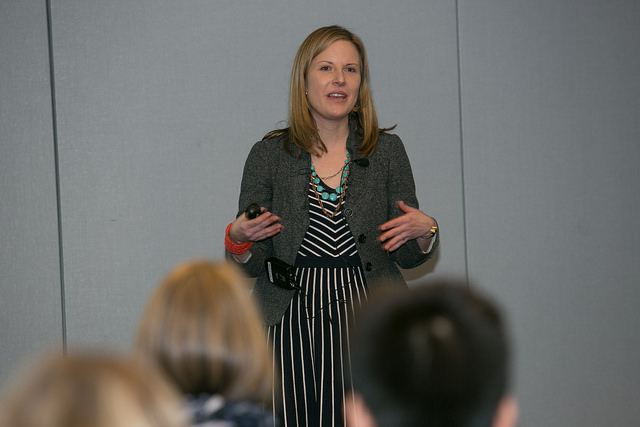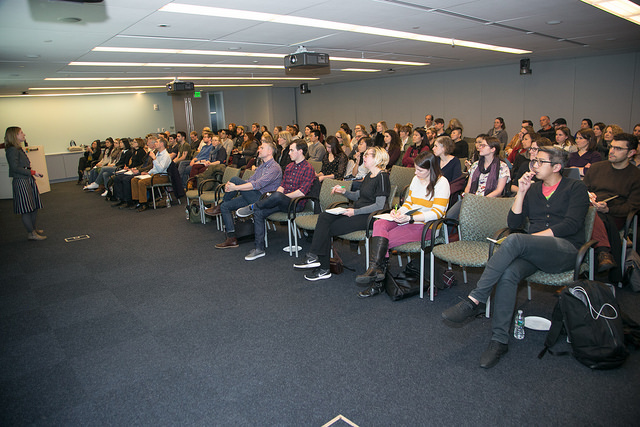This was one of three questions speaker Katy Davis from ideas42 asked her audience at the Using Behavioral Design for Good lecture. If you guessed that the cup cost $1 and the saucer $0.10 then you are in the majority. However the correct answer is $1.05 and $0.05 respectively.

The intuitive answer is not always the right answer
In the problem above, we see that most people will jump to an intuitive answer even if it’s incorrect. Davis explained that if we could better understand how people think, we would become better designers. Humans can be logical but we rely heavily on past experiences and context to determine how to behave. We are quick to make assumptions about everything from answers to math problems to how to act in public.
Understanding Context
Davis outlined a few ways people approach a situation. We as humans don’t have the time or the energy to think through every logical outcome so we rely on our assumptions fill in the relevant information. These are the default mental models we use to make a judgement.
People think that their own identity accounts for 70% of their behavior, when actually, environment accounts for about 70% of behavior and only about 30% comes from individual identity. Social norms can have a huge effect on how we react in different situations. Davis gave the example of the New York Metro escalator etiquette: the left side of the escalator is reserved for those who want to climb the escalator as it travels upward and the right side is for those who just stand on a step. New Yorkers are not shy to push their way up the escalator if there are others standing on the wrong side. The norm is not enforced to this degree in other cities. Seeing a social norm being violated or enforced changes the likelihood of an observer also participating in the norm.

Katy Davis speaking to her audience
Making a Diagnosis
The default mental models a person relies on are really powerful. In order to solve the problem, a designer first needs to understand why a certain behavior is happening. This happens with research. Tools like ethnographic research, observations and data analysis can uncover these insights.
In the example Davis shared, a bank enlisted ideas42 to increase the use a digital check deposit feature. People had self reported that some of the reasons they weren’t using the feature was because it was too difficult, or they didn’t trust technology But, as Davis pointed out, people don’t have great insight into their own behaviors.
Ideas42 found that the if customers could deposit a check once with the app, they were far more likely to continue using the feature. The bank sent a letter to their patrons. It included the amount of people who used mobile deposits as a social norm, a step-by-step guide, and with a $5 check that could only be redeemed through use of the app. By removing all the barriers that inhibited users of the app before, the bank was able to increase the use of the feature.

Audience from Using Behavioral Design for Good
Actions Speak Louder than Words
The result of a person’s action can tell us more about the process than their initial intentions. In the bank example, the process was blocked by the preconceived notions about the feature. Davis challenged us to think about the problems in our own lives and the behaviors that surround them. Tackling big problems requires with a critical look at the environment, a diagnosis of why certain behaviors occur, and then finally a user-tested solution that reduces human error.
We all are driven by human nature. With an understanding of context, we can account for people’s behavior to solve complex problems.
Sarah Croughwell is a User Experience Researcher at Motivis Learning and the Communications Director for AIGA Boston. Guided by curiosity, Sarah explores the intersection of design and the social sciences both in her work and in her observation. You can follow her on Twitter, Dribbble, and Instagram.
—
Image header by José Martín, Unsplash
Coffee Photo by Jeremy Ricketts, Unsplash
Event photography by David Fox